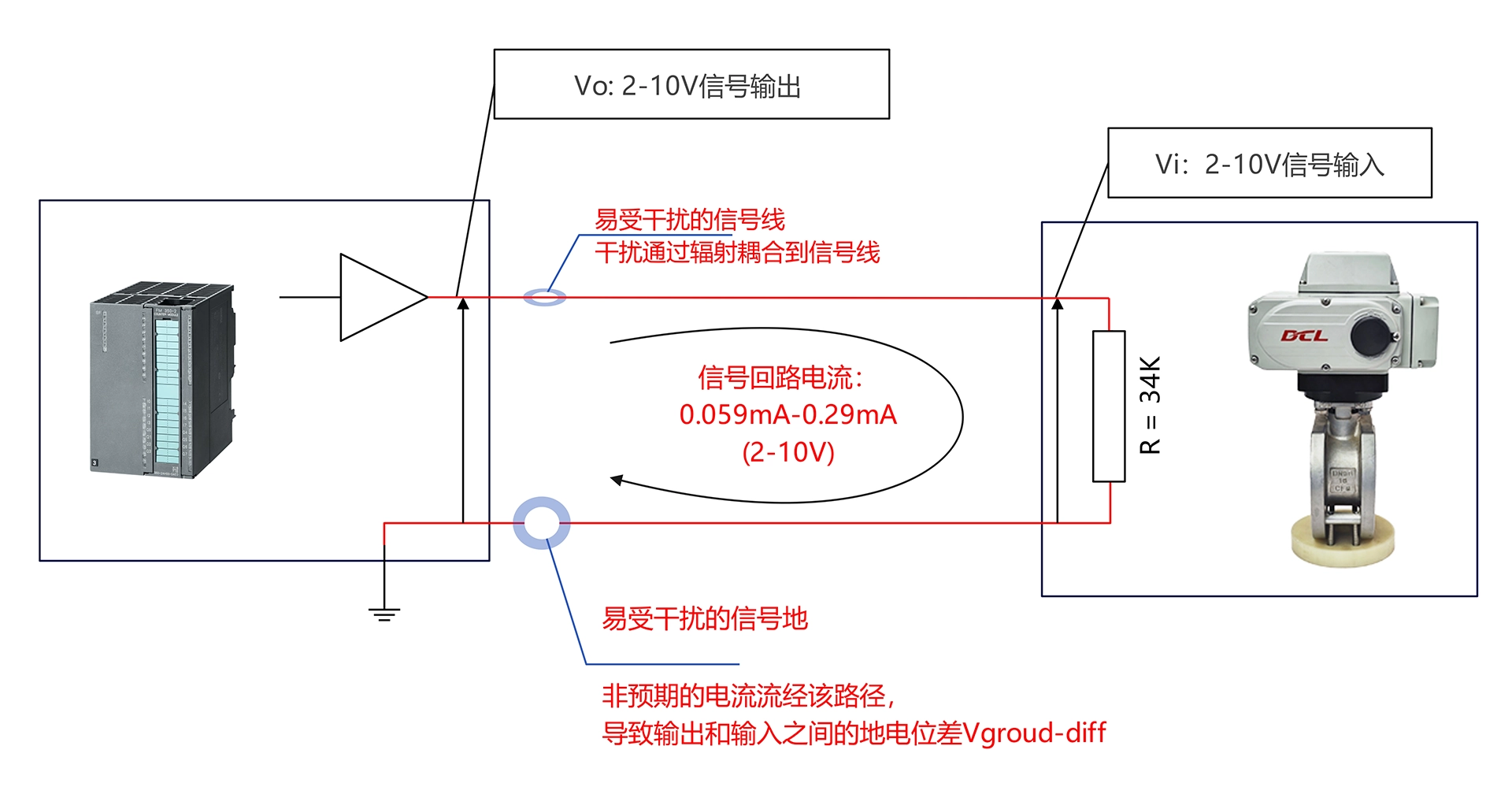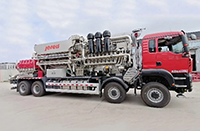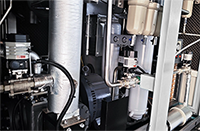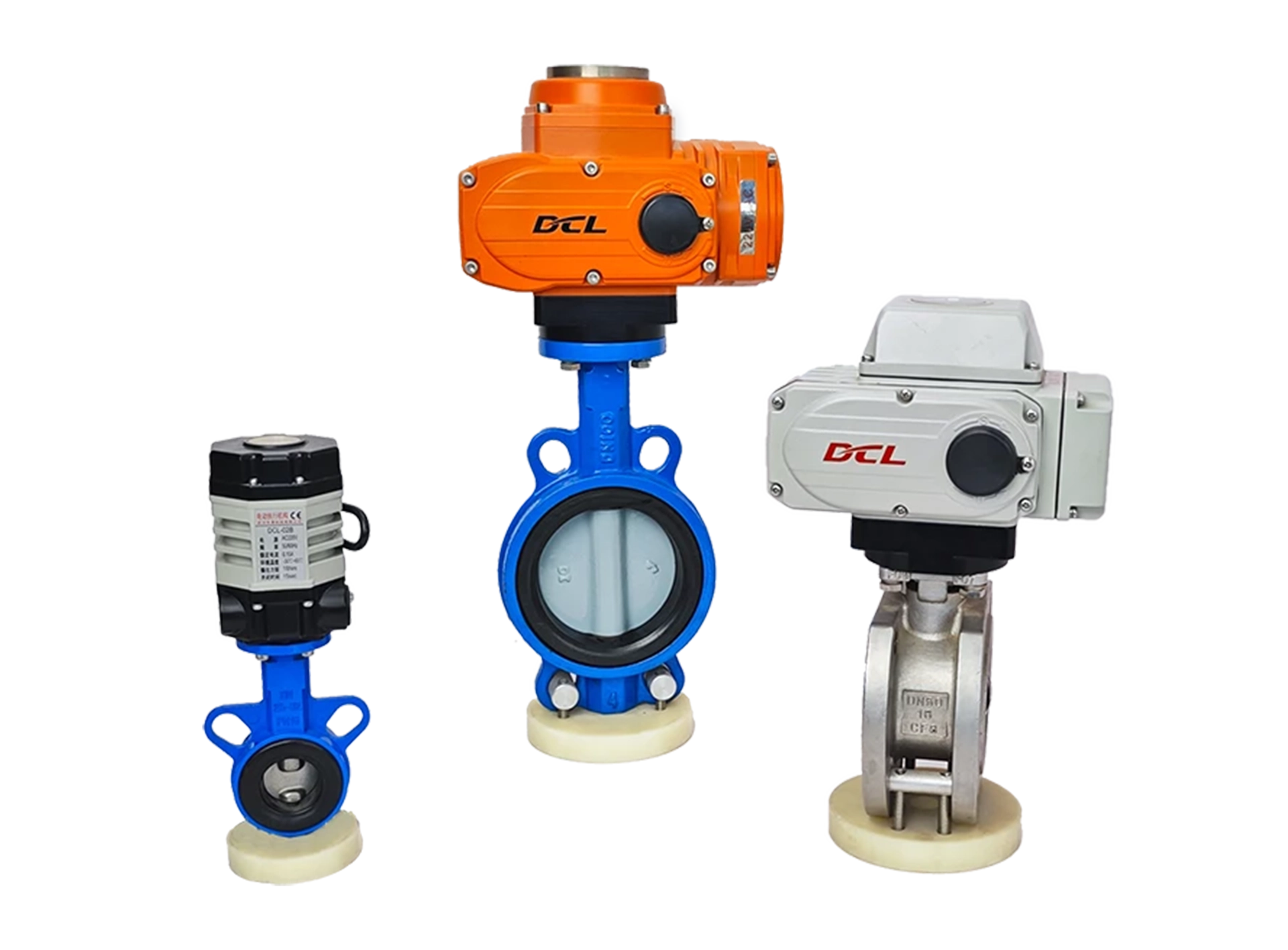Electric actuator anti-interference performance competition
4-20mA VS 2-10V
In the application of electric actuator immunity, the use of a 4-20mA analog signal is very much better than the use of a 2-10V analog signal in terms of immunity, why?
- 2-10V signal analysis
- 4-20mA signal analysis
- reach a verdict
2-10V signal analysis

As shown above:
- When we use 2-10V, the input signal current is very low (0.059mA-0.29mA) due to the high input resistance on the module (R=34K). The result is a very low signal-to-noise ratio on that path, which means poor conducted and radiated immunity. In other words, this is the most vulnerable part from an electronic design point of view.
- On a 2-10V signal path, the output device can only be assured of the correctness of the output voltage (Vo) on the controller side (because the voltage feedback point is close to the output pin). In contrast, the input voltage (Vi) on the actuator side cannot be ensured to be correct because Vi = Vo + Vnoise + Vground-diff, and Vnoise and Vground-diff are very susceptible to transients from disturbances, which cannot be avoided.
- The length of 2-10V signal cable, internal resistance and shielding measures will significantly affect the anti-interference performance of 2-10V, the longer the cable, the higher the internal resistance of the cable, the worse the shielding measures, the worse the anti-interference performance of 2-10V signal. Therefore, 2-10V is commonly used for very short distance communication.
4-20mA signal analysis

Compared to 2-10V, 4-20mA just solves the 2 fatal weaknesses of 2-10V signals. As shown in the figure above:
- When we use 4-20mA, the input signal current is relatively high (4mA-20mA) due to the low input resistance on the module (R=120 ohms). The result is a high signal-to-noise ratio on that path, which means better conducted and radiated immunity. Therefore, it is difficult to interfere with the 4-20mA signal line at a large rate.
- On the 4-20mA signal path, the output device ensures the correctness of the current in the entire output loop, including the current on the output side and the current at the actuator input. This is because the feedback sampling target of the output circuit is the current at the output side of the 4-20mA loop, and the currents are exactly equal in the entire signal loop. Therefore, the current sampled at the actuator side must be the current output from the control side. Even in the presence of interference and inconsistent ground levels, the 4-20mA output circuit ensures the correctness of the signal current through active negative feedback regulation.
- The length and internal resistance of 4-20mA signal cable have less influence on the anti-interference performance of 4-20mA. Therefore, 4-20mA is commonly used for long distance communication.
reach a verdict
In summary, 4-20mA signals are significantly better than 2-10V signals in terms of interference immunity in industrial sites. This is also true for electric actuator application scenarios.
Related Technical Articles:
Relevant technical standards


























 Egong.com.cn 42018502006527 No.
Egong.com.cn 42018502006527 No.